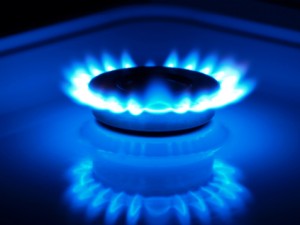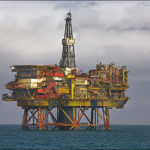 Natural gas rebounded from yesterdays two-week low as the freezing cold weather in the US continued to support high natural gas and heating demand and to deplete gas stockpiles, at a time when they are already at a 10-year seasonal low.
Natural gas rebounded from yesterdays two-week low as the freezing cold weather in the US continued to support high natural gas and heating demand and to deplete gas stockpiles, at a time when they are already at a 10-year seasonal low.
On the New York Mercantile Exchange (NYMEX), natural gas for delivery in April rose by 2.26% to trade at $4.725 per million British thermal units by 10:06 GMT. Natural gas futures hit a session high at $4.729 per mBtu, while day’s low was touched at $4.603 per mBtu. Yesterday, the energy source touched $4.593 per mBtu, the weakest level since February 11th after which it settled the day 8.1% lower.
On February 20, the energy source touched $6.378 per million British thermal units, the strongest level since December 4th 2008 to settle last week 19.9% higher.
Prices have soared 29% so far in 2014, as the US experienced the coldest January in two decades, which boosted demand for the heating fuel and cut stockpiles at the second week of February to a 10-year low for that time of the year. The energy source settled last year 26% higher, the best performance since 2005 and second straight annual advance.
According to Standard & Poor’s GSCI gauge of 24 commodities, gas futures are the most volatile commodity this year as volatility more than doubled from 31.64% last year to 80.2% in 2014, and are also the second-biggest gainer after coffee.
Short-term weather outlook
NatGasWeather.com reported on February 24th that cold air became anchored over the northern US as the latest cold blast sweeps through. Light snowfall is expected near the Great Lakes region and over the northern Plains and Rockies, with only minor accumulations.
A more impressive Arctic blast will deeper into the US on Tuesday night, bringing freezing cold air, with temperatures of -15 to -20 degrees Fahrenheit for much of the Midwest and near zero and single digit readings for the Northeast.
The website warned that even more impressive cold reinforcing shot of Arctic air is expected to follow for the northern US on Thursday, before a weather system out of the Plains warms temperatures into the central US and Mid-Atlantic on Saturday, forcing the extreme cold over the north to weaken. The latter will somewhat moderate temperatures and briefly ease natural gas demand, before a Northeastern storm brings a return to colder-than-normal temperatures over the highest-consumption states of the Northeast at th end of the week.
Extended forecast
NatGasWeather.com’s extended forecast for the period ended March 9th called for a strong winter storm to track across the central US. While the initial storm leaves cold air in its wake over the northern US, a much stronger storm will be developing over the central US. The latter will briefly warm temperatures (for a day or two) over the Mid-Atlantic and portions of the Northeast. After that the storm has the potential to develop into a massive Northeastern storm around March 4-5th, bringing heavy rain, thunderstorms and snowfall. Colder-than-normal conditions over the northern US are expected to close out the first week of March, with temperatures 10-15 degrees Fahrenheit lower than average.
According to AccuWeather.com, temperatures in Cleveland on February 27th may bottom at 1 degree Fahrenheit, 27 beneath average, while readings in Detroit may plunge to -4 degrees Fahrenheit, below the average of 24. The low in Chicago is expected to be -14 degrees Fahrenheit, 39 below normal.
When cold weather is expected, natural gas surges as increased electricity demand to power air-conditioning calls for more supply of the fuel, which is used for a quarter of U.S. electricity generation. Above-average readings in the winter season have the opposite effect. Consumption usually picks up from November through March. According to the Energy Information Administration, power generation accounts for 32% of U.S. gas demand and 49% of U.S. households use the energy source for heating.
US gas inventories levels
The Energy Information Administration reported on Thursday that US natural gas inventories fell by 250 billion cubic feet in the seven days through February 14th, below the median forecast of 257 billion cubic feet, by 16 analysts in a Bloomberg survey. The decline, however, was almost double the five-year average drop of 133 bcf during the comparable week.
Total gas held in US underground storage hubs fell to 1.443 trillion cubic feet, the weakest level for this time of the year since 2004. US gas stockpiles were 40.3% below last year’s amount of 2.418 trillion cubic feet during the comparable week, which is also an all-time high. The deficit to the five-year average widened to a record 33.9%, up from 27.2% a week earlier.
Inventories at the East Region received a net withdrawal of 129 bcf and fell to 685 bcf, 34.7% below the five-year average of 1.049 trillion cubic feet. Stockpiles in the West Region fell by 30 bcf to 229 bcf and were 30.4% beneath the average. Inventories at the Producing Region slid by 91 bcf. At 529 bcf, they were 34.4% below the five-year average amount of 806 billion cubic feet.
According to data by the Energy Department’s statistical arm, supplies have fallen 50% in the past 12 weeks through January 31st.





